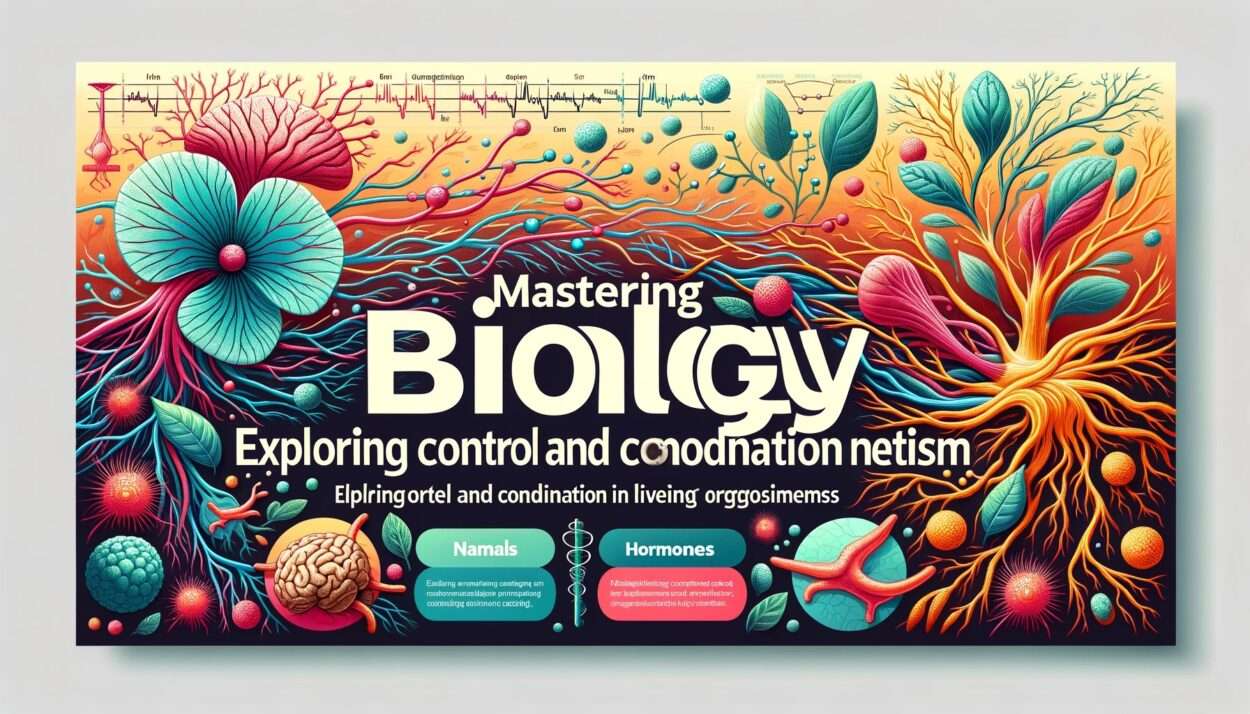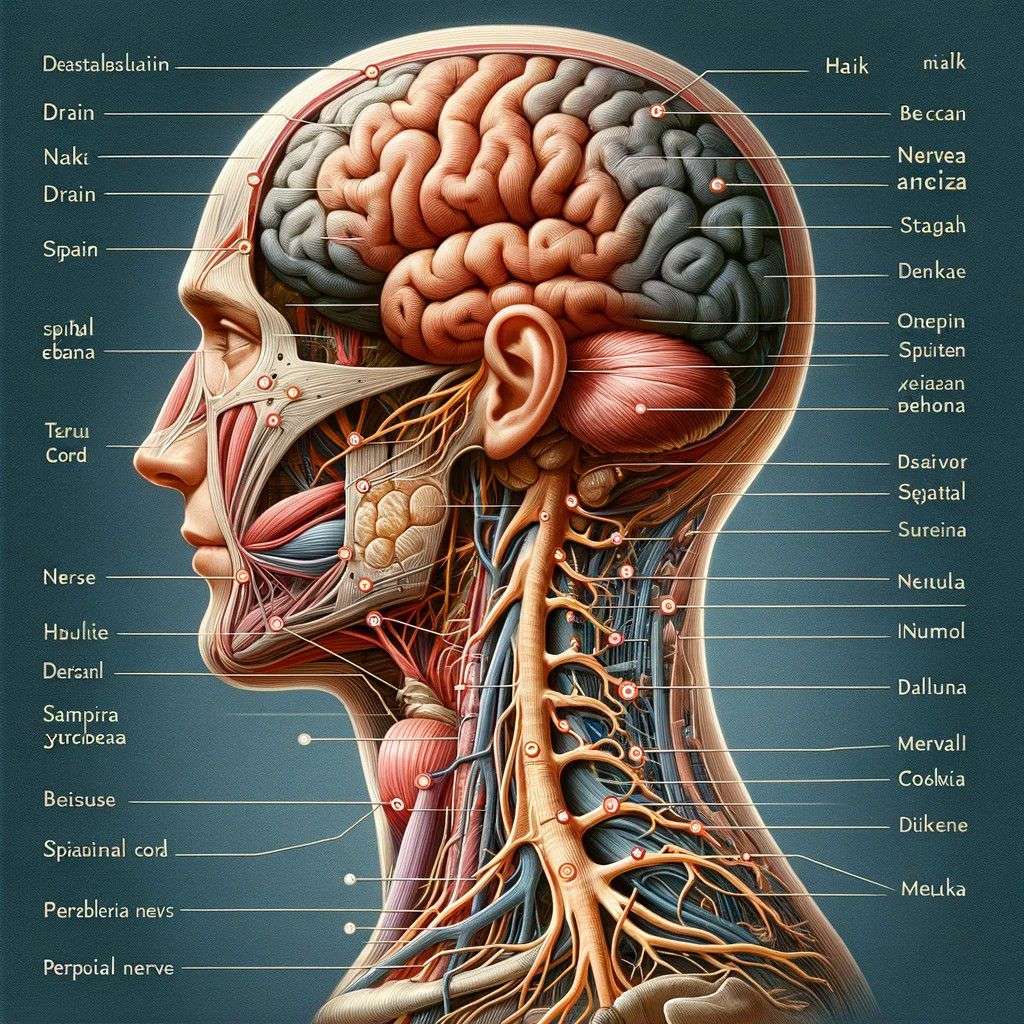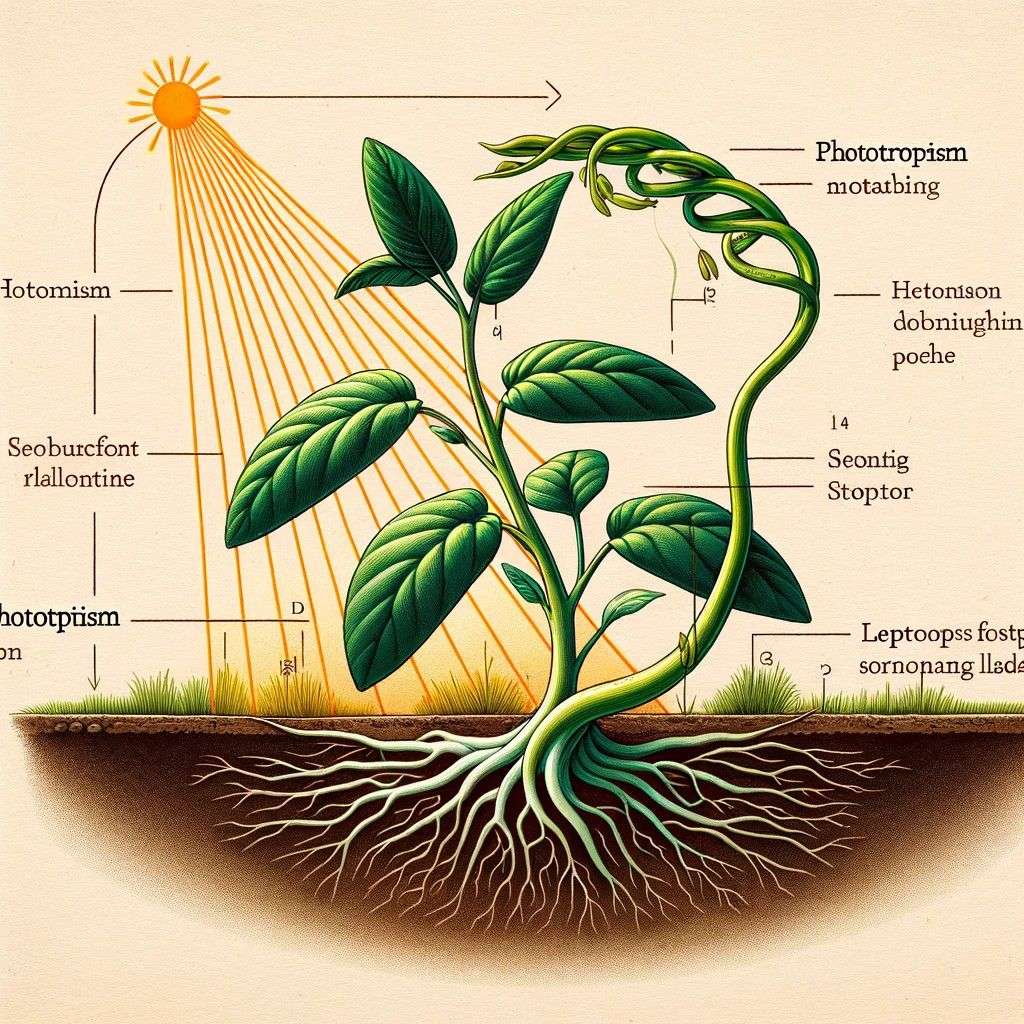
Mastering Biology: Exploring Control and Coordination in Living Organisms

Understanding Control and Coordination in Living Organisms: A Comprehensive Guide for Class 10 Students
Introduction to Control and Coordination
In the fascinating world of biology, control and coordination in living organisms are essential processes that allow them to respond and adapt to their environment. This article delves into the intricate systems that facilitate these vital functions, with a special focus on human beings, plants, and animals. Our journey through this topic will help you, the curious class 10 student, understand how living organisms masterfully regulate and harmonize their internal and external activities.
The Nervous System: The Body’s Rapid Response Team
The nervous system, primarily in animals, plays a crucial role in control and coordination. It’s akin to a highly efficient communication network, with neurons (nerve cells) acting as the messengers. The human nervous system is divided into two main parts:
- The Central Nervous System (CNS): This includes the brain and spinal cord, serving as the control center.
- The Peripheral Nervous System (PNS): Comprising numerous nerves, it connects the CNS to the rest of the body.

How Neurons Communicate
Neurons communicate through electrical impulses and chemical signals, transmitting information at lightning-fast speeds. This communication is crucial for reflex actions, like quickly withdrawing your hand from a hot surface.
Image: A detailed illustration of a neuron, showing dendrites, the axon, and synaptic terminals.
The Endocrine System: The Hormonal Harmony
While the nervous system is fast, the endocrine system takes a slower, more prolonged approach. It uses hormones, which are chemical messengers secreted by glands, to regulate various functions. For example, the pancreas secretes insulin to regulate blood sugar levels.
Coordination in Plants: Slow but Sure
Plants, though lacking a nervous system, exhibit remarkable control and coordination. This is primarily achieved through chemical substances known as phytohormones or plant hormones. These hormones control processes like growth, flowering, and response to stimuli (like light and gravity).

The Role of the Brain in Coordination
The human brain is the command center, overseeing all bodily functions. It is divided into various parts, each with a specific role. For instance, the cerebrum handles thought and action, while the cerebellum takes care of balance and coordination.
Conclusion: The Symphony of Life
Control and coordination in living organisms are akin to a symphony, with each part playing a crucial role in maintaining harmony. As class 10 students, understanding these processes not only enriches your knowledge of biology but also deepens your appreciation of the complexity and wonder of life.
Nervous System in Animals
The nervous system in animals is a complex, highly organized network that coordinates their actions and sensory information by transmitting signals to and from different parts of the body. It’s essentially the body’s electrical wiring.
1. Structure and Components:
- Central Nervous System (CNS): This includes the brain and spinal cord. The brain processes and interprets sensory information sent from the spinal cord, while the spinal cord acts as a conduit for signals between the brain and the rest of the body.
- Peripheral Nervous System (PNS): Consists of nerves that branch out from the CNS to the rest of the body. These nerves carry signals from the brain to muscles for movement and from sensory organs back to the brain.
2. Functioning:
- Sensory Input: Sensory nerves gather information from the environment or other body parts and send it to the CNS.
- Data Processing: The CNS processes this information and decides on an appropriate response.
- Motor Output: Signals are then sent back through the nervous system to muscles or glands to respond accordingly.
3. Reflex Actions: These are rapid, involuntary responses to stimuli, like pulling your hand away from something hot. They are important for survival as they provide swift reactions to potentially harmful situations.
Coordination in Plants
Plants, despite not having a nervous system, exhibit a sophisticated form of coordination that involves using chemical signals to react to their environment.
1. Tropisms: These are directional growth responses where plants grow towards or away from stimuli.
- Phototropism: Growth towards light.
- Geotropism: Growth in response to gravity.
- Hydrotropism: Growth towards moisture.
2. Hormones: Plant hormones or phytohormones play a crucial role in controlling and coordinating growth, development, and responses to stimuli. Some key hormones include:
- Auxins: Involved in phototropism and cell elongation.
- Gibberellins: Promote stem elongation, germination, and flowering.
- Cytokinins: Stimulate cell division.
3. Response to Environmental Stimuli:
- Light: Plants use light sensors like phytochrome to detect light and orient their growth accordingly.
- Gravity: Plants sense gravity and direct their roots downward and shoot upward.
Nervous System in Animals
The nervous system in animals is a complex, highly organized network that coordinates their actions and sensory information by transmitting signals to and from different parts of the body. It’s essentially the body’s electrical wiring.
1. Structure and Components:
- Central Nervous System (CNS): This includes the brain and spinal cord. The brain processes and interprets sensory information sent from the spinal cord, while the spinal cord acts as a conduit for signals between the brain and the rest of the body.
- Peripheral Nervous System (PNS): Consists of nerves that branch out from the CNS to the rest of the body. These nerves carry signals from the brain to muscles for movement and from sensory organs back to the brain.
2. Functioning:
- Sensory Input: Sensory nerves gather information from the environment or other body parts and send it to the CNS.
- Data Processing: The CNS processes this information and decides on an appropriate response.
- Motor Output: Signals are then sent back through the nervous system to muscles or glands to respond accordingly.
3. Reflex Actions: These are rapid, involuntary responses to stimuli, like pulling your hand away from something hot. They are important for survival as they provide swift reactions to potentially harmful situations.
Coordination in Plants
Plants, despite not having a nervous system, exhibit a sophisticated form of coordination that involves using chemical signals to react to their environment.
1. Tropisms: These are directional growth responses where plants grow towards or away from stimuli.
- Phototropism: Growth towards light.
- Geotropism: Growth in response to gravity.
- Hydrotropism: Growth towards moisture.
2. Hormones: Plant hormones or phytohormones play a crucial role in controlling and coordinating growth, development, and responses to stimuli. Some key hormones include:
- Auxins: Involved in phototropism and cell elongation.
- Gibberellins: Promote stem elongation, germination, and flowering.
- Cytokinins: Stimulate cell division.
3. Response to Environmental Stimuli:
- Light: Plants use light sensors like phytochrome to detect light and orient their growth accordingly.
- Gravity: Plants sense gravity and direct their roots downward and shoots upward.
Both the nervous system in animals and the coordination mechanisms in plants are brilliant examples of how living organisms have evolved complex systems to survive and thrive in their environments.
Questions and Answers
- What are the two main parts of the nervous system in animals?
- Answer: The two main parts are the Central Nervous System (CNS), consisting of the brain and spinal cord, and the Peripheral Nervous System (PNS), comprising nerves that branch out from the CNS to the rest of the body.
- How do neurons in the nervous system communicate?
- Answer: Neurons communicate through electrical impulses and chemical signals (neurotransmitters), transmitting information at high speeds between different parts of the body.
- What is a reflex action, and why is it important?
- Answer: A reflex action is a rapid, involuntary response to a stimulus. It is important because it provides swift reactions to potentially harmful situations, aiding in survival.
- What role do hormones play in animals?
- Answer: Hormones in animals are chemical messengers that regulate various bodily functions such as growth, metabolism, reproduction, and stress responses.
- Can you name a hormone responsible for regulating blood glucose levels?
- Answer: Insulin, produced by the pancreas, is responsible for regulating blood glucose levels.
- How do plants respond to light and gravity?
- Answer: Plants respond to light through phototropism (growth towards light) and to gravity through geotropism (growth in response to gravity).
- What are phytohormones, and what is their role in plants?
- Answer: Phytohormones, or plant hormones, are chemicals that regulate plant growth and development, influencing processes like cell elongation, flowering, and response to environmental stimuli.
- What is the significance of the hypothalamic-pituitary axis in animals?
- Answer: The hypothalamic-pituitary axis is a crucial part of the endocrine system that regulates the release of several hormones. The hypothalamus controls the pituitary gland, which in turn influences other endocrine glands.
- What is an example of a hormonal disorder in humans?
- Answer: Diabetes is a hormonal disorder caused by insufficient insulin production or action, leading to abnormal blood glucose levels.
- How do plants use hormones to respond to water availability?
- Answer: Plants respond to water availability through hydrotropism, where they grow towards moisture. This response is mediated by plant hormones that influence cell growth and direction.